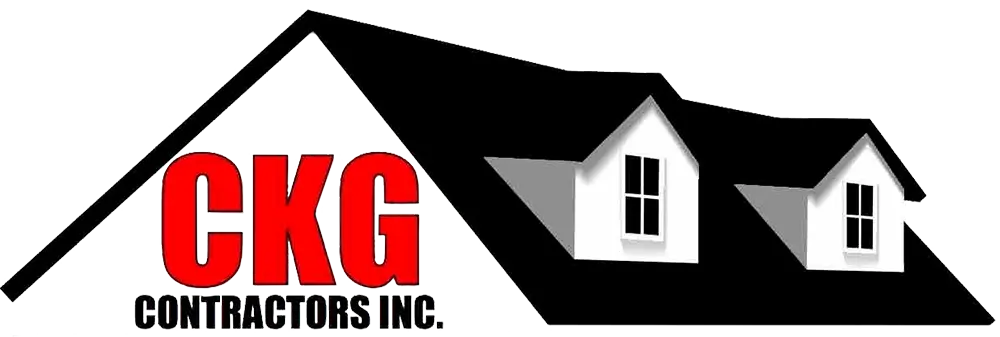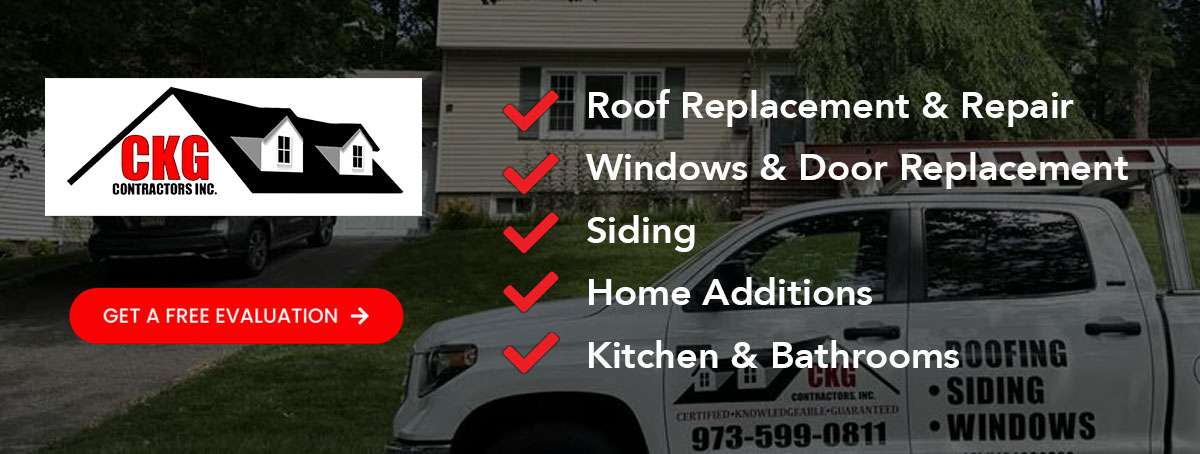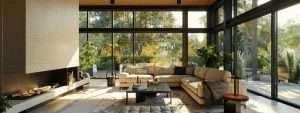
Table Of Contents:
- How Do Triple-Pane Windows Improve Insulation in Cold Climates?
- How Do Triple-Pane Windows Enhance Indoor Comfort in Winter?
- What Are the Long-Term Cost Savings of Installing Triple-Pane Windows?
- How Do Triple-Pane Windows Compare to Double-Pane Windows for Cold Climates?
- What Should Homeowners Consider When Choosing Triple-Pane Windows for Winter?
- How Do Triple-Pane Windows Contribute to Environmental Sustainability in Winter?
- What Are Common Myths About Triple-Pane Windows in Cold Winters?
- Frequently Asked Questions
Triple-pane windows offer homeowners a breakthrough solution for maintaining warmth during frigid winters while cutting down on energy bills and enhancing indoor comfort. At CKG Contractors, Inc., we understand that every element you choose for your home can have a lasting impact on your utility costs, environmental footprint, and overall quality of living. Triple-pane windows are engineered with three separate layers of glass and insulating gas fills to deliver superior thermal performance compared to double-pane alternatives. In the coldest climates, where heat loss is a critical concern, these windows dramatically reduce thermal bridging and improve energy efficiency.
During the installation process, our team emphasizes the importance of precision and quality craftsmanship to ensure optimal performance. With triple-pane windows, the insulating properties are not merely a result of additional glass layers; advanced spacers, low-emissivity (Low-E) coatings, and inert gases like argon or krypton all work in unison to decrease thermal conductivity. These high-performance windows minimize drafts, reduce condensation, and contribute to a comfortable, quiet indoor environment, which is particularly beneficial during harsh winter storms.
In addition to improved insulation, triple-pane windows provide long-term cost savings. Homeowners will notice a reduction in heating bills, allowing energy expenditures to be reallocated toward other home improvement projects. While the initial investment might be higher compared to double-pane or standard windows, the durability, energy savings, and little-to-no maintenance required make them an intelligent choice for both residential and commercial properties in cold climates.
Furthermore, triple-pane windows are designed to withstand extreme weather conditions. Their superior construction offers enhanced security features and noise reduction, making your home a tranquil retreat from the noise and turbulence of the outside world. With decades of proven performance in managing the thermal dynamics of modern homes, these windows also contribute to environmental sustainability by reducing carbon footprints.
In this article, we will explore how triple-pane windows improve insulation in cold climates, enhance indoor comfort during winter, provide long-term cost savings, and compare their performance to double-pane alternatives. We will also outline factors for homeowners to consider when installing triple-pane windows, their contribution to sustainability, and debunk common myths surrounding these high-performance windows.
How Do Triple-Pane Windows Improve Insulation in Cold Climates?
Triple-pane windows improve insulation primarily through their advanced design, which incorporates three separate layers of glass separated by insulating gas fills. The first layer is the outer glass which protects the inner layers from external weather elements. The middle layer acts as an additional barrier, reducing heat transfer from the interior to the exterior. Finally, the innermost glass optimizes the thermal retention within the home.
What Makes Triple-Pane Windows More Energy-Efficient Than Double-Pane?
Triple-pane windows are more energy-efficient due to the additional glass layer that creates an extra insulated air space compared to double-pane windows. The extra layer minimizes heat loss by slowing down heat transfer through conduction, convection, and radiation. In fact, studies have shown that triple-pane configurations can reduce heat loss by up to 15–20% compared to double-pane setups. The incorporation of low-emissivity (Low-E) coatings on the glass further enhances energy performance by reflecting interior heat back indoors during winter while blocking harmful ultraviolet rays.
Moreover, the inert gases present between the glass layers, such as argon or krypton, have lower thermal conductivity than air, improving the overall insulation. In colder climates, where every degree of temperature conservation counts, this energy efficiency translates directly to a substantial reduction in heating bills. The results are not only lower energy costs but also lower greenhouse gas emissions—a benefit for environmentally conscious homeowners.
How Does Superior Insulation Reduce Heat Loss During Winter?
Superior insulation provided by triple-pane windows reduces heat loss in winter by significantly lowering thermal conductivity. The carefully engineered layers trap air and inert gases, which act as insulators between the warm indoor air and the cold exterior. This construction creates a robust barrier against convection currents and minimizes energy loss through conduction. As a result, even when external temperatures drop sharply, the temperature inside remains more stable.
This stability improves overall home comfort, reducing the workload on heating systems. Homeowners often experience fewer cold drafts and surface condensation issues, which can lead to mold growth over time. The reliable insulation also means that less energy is required to maintain a comfortable indoor temperature, providing increased efficiency and additional long-term cost savings. The minimized heat loss not only preserves the warmth of your home but also ensures that your heating system operates more efficiently, extending its lifespan and reliability.
What Are the Insulation Benefits of Triple-Pane Windows for Cold Winters?
The insulation benefits of triple-pane windows go beyond minimizing thermal transfer. They dramatically enhance the overall energy profile of a home. Key benefits include:
- Enhanced Thermal Performance: Triple-pane windows maintain stable indoor temperatures by reducing energy losses during cold winters. This contributes to an overall improvement in energy efficiency.
- Prevention of Drafts: By sealing the home more tightly, these windows significantly reduce drafts, ensuring that cold spots are minimized—thus increasing occupant comfort.
- Lower Heating Costs: With less heat escaping your living spaces, heating systems do not need to work as hard, saving energy and, consequently, lowering utility bills.
- Consistent Indoor Climate: These windows ensure a uniform temperature throughout the home, which is essential for maintaining comfort without hot or cold spots.
- Reduced Moisture Accumulation: With better insulation comes reduced condensation on window surfaces. This helps prevent potential damage to frames and adjacent areas, reducing maintenance costs.
Triple-pane windows are particularly effective for homes in northern climates where winter temperatures are extreme. Their superior insulation capabilities ensure that your home’s interior remains warm, inviting, and energy-efficient even on the coldest days.
How Do Triple-Pane Windows Enhance Indoor Comfort in Winter?

Enhanced indoor comfort during winter is one of the most compelling reasons to install triple-pane windows. By reducing drafts and cold spots, these windows create an environment where occupants feel warmer and more secure. The sound-proofing benefits of triple-pane windows further contribute to a peaceful indoor atmosphere.
How Do Triple-Pane Windows Reduce Drafts and Cold Spots?
Triple-pane windows are designed to minimize air leakage through tightly sealed frames and multiple glass layers. The air spaces between the panes act as buffers that prevent quick temperature fluctuations, thereby reducing the penetration of cold outdoor air. As drafts are minimized, homeowners experience a more stable indoor climate. This means that every room maintains a more consistent temperature, eliminating the discomfort of uneven heating, where some parts of the room are warmer than others.
The improved sealing also means that these windows are more effective in filtering out dust and pollutants, further enhancing indoor air quality. Additionally, by reducing drafts, the reliance on forced heating systems decreases, which can contribute to a quieter, more serene home environment. The improved air barrier significantly diminishes the formation of cold spots that are often associated with window installations in older or improperly sealed home structures.
Why Do Triple-Pane Windows Minimize Condensation Inside Homes?
Condensation forms when moisture-laden air meets a cold surface and begins to condense into water droplets. Triple-pane windows minimize this phenomenon by maintaining a higher surface temperature on the interior pane. The extra layer of glass and insulating gas ensures that the inner surface of the window does not become excessively cold, which is crucial in a winter setting.
With double-pane windows, the temperature differential between the interior and the window surface is often enough to promote condensation, which can lead to mold growth and damage to window frames. Triple-pane design mitigates these risks by stabilizing internal temperatures, thus keeping humidity levels in check. This is especially important for homeowners who are concerned with indoor air quality and the long-term durability of their window installations.
How Does Noise Reduction Contribute to a More Comfortable Winter Environment?
Another benefit of triple-pane windows is their superior performance in noise reduction. The multiple layers and insulating materials within these windows absorb and dissipate sound waves more effectively than double-pane windows. This results in a quieter indoor environment, which is particularly beneficial during winter when people spend more time indoors indoors.
The physical properties of the glass layers and the insulating gas prevent high levels of ambient noise from entering the living space. Whether it’s the constant hum of winter traffic or the blustery sounds of strong winds, triple-pane windows ensure that any external disturbances are significantly toned down. This contributes to better sleep quality and reduced stress, as homeowners are enveloped in a calm and peaceful atmosphere.
Below is an illustrative table summarizing the benefits of triple-pane windows for indoor comfort during winter:
The environmental benefits, combined with the physical comfort provided by reduced drafts and lower noise levels, make triple-pane windows the ideal solution for any homeowner aiming to improve their indoor winter experience.
What Are the Long-Term Cost Savings of Installing Triple-Pane Windows?
Beyond the immediate benefits of improved comfort, triple-pane windows offer significant long-term cost savings. These savings manifest primarily through reduced energy bills and the extended durability of the windows, which minimizes replacement costs over time.
How Do Triple-Pane Windows Lower Energy Bills in Cold Winters?
Triple-pane windows lower energy bills due to their superior insulating properties. By reducing heat loss, these windows allow your home’s heating system to run more efficiently. In harsh winter climates, the extra insulation provided by an additional glass pane leads to less energy consumption for maintaining a comfortable interior temperature. This means that when temperatures plunge, the load on your heating system is reduced, thereby lowering the energy required to heat your home.
Energy efficiency is further enhanced by low-emissivity coatings and inert gas fills, which help reflect energy back into the room. These features not only contribute to reduced heating costs but also lead to consistent energy savings over time. Homeowners who upgrade to triple-pane windows can expect an annual reduction in heating costs, often in the range of 10–20%, depending on the climate zone and the efficiency of the installed windows.
Are There Tax Credits or Rebates Available for Energy-Efficient Windows?
Many states and local governments, as well as utility companies, offer tax credits, rebates, or other incentives for installing energy-efficient windows, including triple-pane models. These financial incentives are designed to encourage homeowners to invest in technologies that reduce energy consumption and environmental impact. By taking advantage of these rebates and credits, the initial cost of installing triple-pane windows can be significantly offset, reducing the overall investment.
At CKG Contractors, Inc., we often assist our clients in identifying available programs and securing the necessary documentation. Energy Star® rated windows, which many triple-pane options are, may qualify for federal tax credits in addition to local incentives. This comprehensive financial support makes triple-pane windows a smart investment not only in terms of energy savings but also overall cost reduction.
How Does Durability of Triple-Pane Windows Affect Long-Term Value?
Triple-pane windows are built with durability in mind, featuring robust framing materials and high-quality construction that can withstand severe weather conditions. Their enhanced durability means that these windows have a longer lifespan and require less frequent replacement or repairs compared to double-pane windows. The initial higher cost is balanced by the extended service life and the reduced need for maintenance. Over the years, the cost savings from lower energy bills and maintenance expenses add up, resulting in a lower total cost of ownership.
Additional factors contributing to the long-term value include: – Resilience to Weather Extremes: Triple-pane windows are less prone to warping, cracking, or fogging over time due to their advanced sealing and construction. – Warranty Benefits: Many manufacturers offer extended warranties on triple-pane windows, providing peace of mind regarding potential defects or performance issues. – Property Value Increase: Home improvements that enhance energy efficiency and comfort can increase the overall market value of your property.
Incorporating a detailed table, we can summarize the long-term cost-saving aspects:
With these factors in mind, investing in triple-pane windows provides not only immediate comfort benefits but also long-term financial and environmental returns that make it a prudent decision for cost-conscious homeowners in cold climates.
How Do Triple-Pane Windows Compare to Double-Pane Windows for Cold Climates?

When deciding between triple-pane and double-pane windows, it is essential to consider performance under extreme conditions, energy efficiency, and overall cost. Triple-pane windows have become the preferred choice in very cold climates because of their enhanced performance in heat retention, noise reduction, and stability of indoor temperature.
What Are the Key Differences Between Triple-Pane and Double-Pane Windows?
Triple-pane windows differ from double-pane windows in several critical aspects. The most notable difference is the addition of an extra layer of glass, which creates an additional insulating barrier. This extra layer significantly reduces the conduction of heat through the window. Besides insulation, triple-pane windows often incorporate multiple low-emissivity coatings that reflect heat back into the home, compared to the single coating common in double-pane systems.
Furthermore, triple-pane windows usually have superior framing and enhanced gas fill options, which further optimize their thermal efficiency. While double-pane windows are effective in many situations, they simply do not offer the same level of performance in extremely cold environments where heat loss can be a major issue. The technical improvements in triple-pane design result in elevated energy performance ratings and longer-lasting durability, making them a more attractive option for homeowners looking for top-tier insulation performance.
Which Window Type Offers Better Performance in Extreme Cold?
In extreme cold conditions, triple-pane windows offer markedly better performance due to the additional insulating barrier that significantly reduces thermal exchange. This extra pane plays a crucial role in minimizing heat loss and maintaining a consistent, comfortable indoor climate. Under sub-zero temperatures, triple-pane windows have been documented to reduce heat loss by an additional 10–15% over double-pane windows. This makes them particularly suitable for regions with severe winters where every bit of energy saved counts.
In addition to thermal performance, the enhanced shutter and seal design in triple-pane windows provides better resistance to high winds and storm conditions, ensuring that the interior remains warm and protected. Homeowners in northern states or regions with unpredictable winter weather will benefit substantially from these performance gains.
How Does the Price of Triple-Pane Windows Compare to Double-Pane Options?
Triple-pane windows are typically more expensive upfront compared to double-pane windows, mainly due to the additional materials and advanced manufacturing processes involved. However, when evaluating the cost over the long term, the energy savings, reduced maintenance expenses, and extended lifespan often outweigh the initial investment. For instance, while a double-pane window might cost 10–20% less initially, the energy efficiency and durability of triple-pane windows can lead to significant savings over a period of 15–25 years.
Moreover, the potential for tax credits and rebates for energy-efficient home improvements can further narrow the cost gap. Homeowners should evaluate the lifetime cost of ownership rather than the purchase price alone, as triple-pane windows provide substantial long-term benefits in terms of both comfort and financial savings.
Below is a side-by-side comparison table:
In conclusion, the enhanced performance of triple-pane windows, particularly in extreme cold, makes them a superior choice despite the higher initial cost. When considering installation, owners should take into account the overall cost savings, comfort improvements, and environmental benefits, which firmly position triple-pane windows as a wise investment for long-term home improvement.
What Should Homeowners Consider When Choosing Triple-Pane Windows for Winter?
Choosing the right triple-pane windows involves considering several critical factors to maximize their benefits during the cold winter months. Homeowners need to assess features such as energy efficiency ratings, durability, installation quality, and maintenance requirements. The right selection ensures that the windows perform optimally, providing insulation, comfort, and cost savings over many years.
Which Features Make Triple-Pane Windows Best for Cold Climates?
The most important features for triple-pane windows tailored for cold climates include high energy efficiency, low-e coatings, and robust sealing techniques. Homeowners should look for windows with a high U-factor rating, which indicates better insulation performance. Additionally, multiple low-emissivity (Low-E) coatings help to reflect interior heat back into the home, significantly reducing heat loss. The inert gas fills, such as argon or krypton, contribute as well by delivering efficient thermal insulation in the spaces between the panes.
Frames made from materials like fiberglass or vinyl offer excellent durability and resistance to thermal expansion and contraction. These materials maintain their structural integrity over time, ensuring that the window seals remain effective even after years of exposure to extreme weather conditions. It is also critical to choose windows with appropriate spacer seals and weatherstripping to further reduce drafts.
Furthermore, triple-pane windows designed specifically for cold climates often incorporate advanced moisture control features that prevent condensation and damage to window frames. Homeowners should consider features such as integrated defoggers or anti-condensation technologies that maintain a dry, clear view during the winter months.
How Important Is Professional Installation for Maximizing Benefits?
Professional installation is essential for ensuring that triple-pane windows perform at their peak capabilities. Even the best windows can have reduced efficiency if not installed correctly. Proper installation by certified professionals guarantees that the windows are sealed accurately and aligned perfectly with the home’s structure. This prevents air leaks, minimizes thermal bridging, and maximizes energy efficiency.
Certified contractors, like those at CKG Contractors, Inc., follow strict industry guidelines and use advanced techniques to secure window frames and apply appropriate insulation materials. This ensures that the windows integrate seamlessly with your existing structure. Moreover, professional installation often comes with warranties and follow-up services, which offer additional security and assurance for your investment.
What Maintenance Is Required to Keep Triple-Pane Windows Effective?
Maintenance for triple-pane windows is minimal compared to older window technologies. However, routine inspections of the seals and cleaning of the glass surfaces are recommended to ensure continued performance. Homeowners should periodically check the frames and seals for any signs of wear or gaps that might develop over time. Cleaning the glass with non-abrasive cleaners helps maintain clear visibility and can enhance the longevity of the low-e coatings.
It is also beneficial to have professional assessments at regular intervals to detect potential issues before they escalate. While the initial advanced manufacturing techniques and high-quality materials typically result in a long lifespan, proper care will guarantee that your windows remain efficient. A maintenance schedule that includes biannual visual inspections and occasional professional servicing supports the overall durability and efficiency of the windows, ensuring that they continue to deliver the expected benefits even in the harshest winter conditions.
Below is a checklist table for homeowners considering triple-pane windows:
Taking these factors into account can help homeowners make an informed decision, ensuring that the triple-pane windows they choose will provide optimal insulation, enhanced indoor comfort, and long-term cost savings during winter months.
How Do Triple-Pane Windows Contribute to Environmental Sustainability in Winter?

Triple-pane windows play a significant role in reducing a home’s environmental impact by lowering energy consumption and minimizing carbon emissions. Their advanced insulating properties contribute to a sustainable living environment by ensuring that less energy is wasted during the heating process, thereby reducing the overall carbon footprint of the home.
How Does Reduced Energy Consumption Lower Carbon Footprint?
By maintaining a stable indoor temperature and reducing heat loss, triple-pane windows decrease the energy demand on heating systems. This means that less fuel is burned by boilers and furnaces, leading to a direct reduction in carbon dioxide (CO₂) emissions. In regions with long, harsh winters, this reduction can be substantial. Estimates suggest that an upgrade from double-pane to triple-pane windows can cut energy consumption by as much as 15–20%, which in turn lowers the home’s carbon footprint significantly.
Reduced energy consumption not only benefits the environment by decreasing greenhouse gas emissions but also lessens the demand on the power grid. This is particularly important during peak winter months when energy systems are strained. The cumulative effect of widespread adoption of energy-efficient windows can lead to major improvements in regional and national energy sustainability goals.
Can Triple-Pane Windows Help Meet Green Building Standards?
Triple-pane windows can contribute substantially to meeting green building certification standards, such as LEED (Leadership in Energy and Environmental Design) and Energy Star ratings. Their superior performance in terms of insulation, energy efficiency, and durability supports several critical criteria for these certifications. For example, homes equipped with triple-pane windows may receive extra points under energy efficiency categories, thereby enhancing their overall sustainability rating.
Environmental sustainability does not only refer to operational energy savings; it also includes the lifecycle impact of the window installation. With extended durability and reduced maintenance needs, triple-pane windows minimize waste generation from frequent replacements. Additionally, many modern triple-pane windows are manufactured using sustainable practices and recyclable materials, aligning with broader environmental goals and reducing the overall ecological footprint.
Below is a detailed table that outlines the environmental benefits of triple-pane windows:
This table clearly demonstrates how triple-pane windows contribute to sustainability by reducing energy use, lowering emissions, and integrating with eco-friendly building practices.
What Are Common Myths About Triple-Pane Windows in Cold Winters?
Several myths circulate regarding the practicality and performance of triple-pane windows. Addressing and debunking these misconceptions is essential for homeowners considering an investment in high-performance windows. Understanding the true benefits is crucial when evaluating energy efficiency, cost, and maintenance requirements.
Are Triple-Pane Windows Too Expensive for Most Homeowners?
A common myth is that the high initial cost of triple-pane windows makes them unaffordable for most homeowners. While it is true that triple-pane windows have a higher upfront cost compared to double-pane options, this investment is offset over time by significant energy savings, lower maintenance requirements, and extended durability. Studies show that the return on investment becomes apparent within a few years through reduced heating costs, which ultimately makes them a cost-effective solution. When factoring in available tax credits and rebates, the long-term benefits far exceed the initial expense, debunking the myth of prohibitive cost.
Do Triple-Pane Windows Require More Maintenance Than Other Types?
Another misconception is that the additional layers and complex construction of triple-pane windows necessitate higher maintenance. In reality, the advanced technology behind these windows is designed to reduce the need for regular upkeep. The enhanced seals and durable materials ensure that the windows maintain their performance with minimal intervention. Routine cleaning and periodic inspections for any slight seal degradation are generally the only requirements, which is comparable to or even less than the maintenance required for traditional window systems. Their resilience in severe climates further minimizes the likelihood of maintenance issues, confirming that maintenance demands are not significantly higher.
Is the Energy Savings Worth the Initial Investment?
Some homeowners question whether the additional cost of triple-pane windows is truly justified by the energy savings alone. Empirical evidence suggests that the improved insulation, lower energy consumption, and overall enhanced thermal performance result in significant cost savings on heating bills. Over a period of 15 to 25 years, the cumulative savings on energy costs and reduced need for window replacements in New Jersey make triple-pane windows a financially sound investment. These savings, coupled with environmental benefits and increased home comfort, validate the investment and dispel any doubts about their value.
Below is a myth-busting list summarizing these common misconceptions and the factual benefits:
- Cost Myth – Too Expensive? Triple-pane windows have a higher upfront cost but pay off through energy savings and tax incentives. The investment typically recoups costs within 5–7 years, proving long-term affordability.
- Maintenance Myth – More Upkeep Needed? Advanced sealing and durable materials require minimal maintenance beyond regular cleaning and periodic professional inspections. Their improved build quality reduces the likelihood of issues.
- Energy Savings Myth – Not Cost-Effective? With energy savings of 15–20%, the reduced heating bills, combined with increased home comfort, ensure that the initial investment is well justified over the long term.
- Performance Myth – Insufficient in Extreme Cold? Lab tests and field studies consistently show that triple-pane windows perform excellently even in severe climates, which makes them suitable for cold winters while providing superior insulation.
- Sound Insulation Myth – Minimal Noise Reduction? The additional glass and insulating gas significantly dampen sound transmission, leading to a quieter, more comfortable indoor environment.
Debunking these myths not only provides clarity for homeowners but also reinforces the superior performance and long-term benefits of triple-pane windows in cold winter environments.
Frequently Asked Questions
Q: How much more energy does triple-pane windows save compared to double-pane options? A: Triple-pane windows can reduce energy consumption by approximately 15–20% compared to double-pane windows. This is largely due to the additional insulating layer, superior low-e coatings, and inert gas fills. The savings are particularly significant in colder climates, where heating costs can be drastically reduced, leading to a faster return on investment.
Q: Are triple-pane windows suitable for all types of homes? A: Yes, triple-pane windows are suitable for a wide range of homes, from traditional residences to modern constructions, especially in regions experiencing extreme cold. Their enhanced insulation properties not only improve indoor comfort but also boost the energy efficiency of any building. Homeowners can choose from various frame materials and designs that complement their architectural style while delivering superior performance.
Q: What is the typical lifespan of triple-pane windows, and how does it compare to double-pane models? A: Triple-pane windows often have a lifespan of 15–25 years or more, which is generally longer than that of double-pane windows. Their robust construction and advanced sealing mechanisms mean that they require less frequent replacement and maintenance. Over time, the energy savings and durability of triple-pane windows provide a significant long-term economic advantage.
Q: Do triple-pane windows help reduce noise levels inside the home? A: Yes, triple-pane windows are highly effective at reducing noise transmission. The additional layer of glass and insulating gases work together to dampen sound waves from the outside. This improved acoustic performance contributes to a quieter indoor environment, making them a popular choice in urban areas or regions with high external noise.
Q: Can I install triple-pane windows myself, or should I hire a professional? A: It is highly recommended to hire a professional for the installation of triple-pane windows. Proper installation is crucial to ensure that the windows perform as designed in terms of energy efficiency and insulation. Certified professionals, such as those at CKG Contractors, Inc., will ensure that all seals and frames are correctly positioned and that the overall installation meets industry standards, ultimately protecting your investment.
Q: Are there any incentives or rebates available for installing energy-efficient triple-pane windows? A: Many governments and local authorities offer tax credits, rebates, or other financial incentives for installing energy-efficient windows. These programs are designed to reduce the upfront cost of upgrading to triple-pane windows, making them a more attractive option financially. Homeowners should check with local utility providers or government agencies to determine eligibility for such programs.
Q: How do triple-pane windows contribute to environmental sustainability? A: Triple-pane windows contribute to environmental sustainability by reducing the amount of energy required for heating, which leads to a decrease in carbon emissions. The integrated energy-saving features, such as low-e coatings and inert gas fills, significantly lower the overall environmental impact of home heating. These windows also tend to have a longer lifespan, reducing waste and supporting green building practices.




